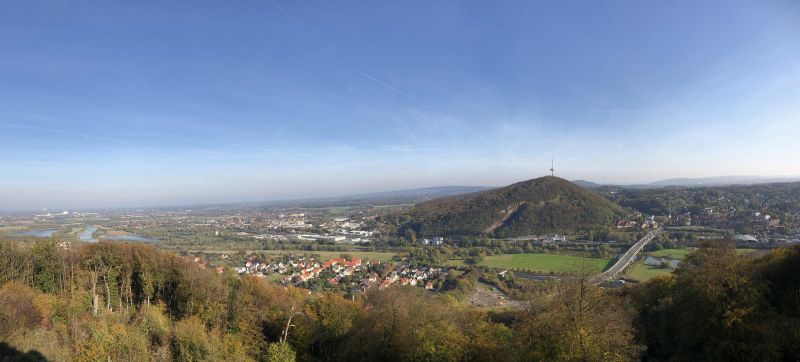Tales from the hills. The fate of Polish forced labourers at Porta Westfalica 1944/45
Mediathek Sorted






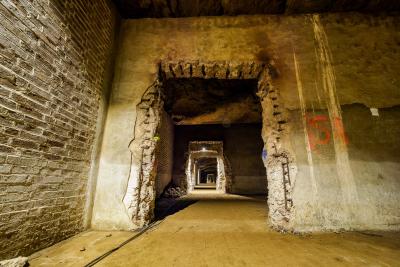
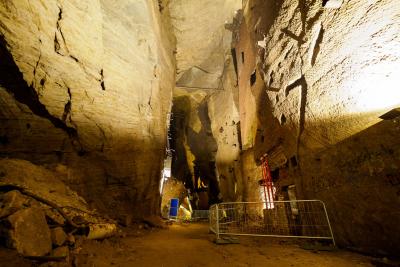

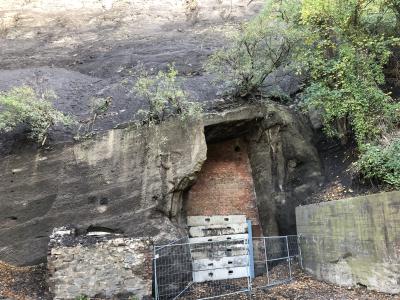

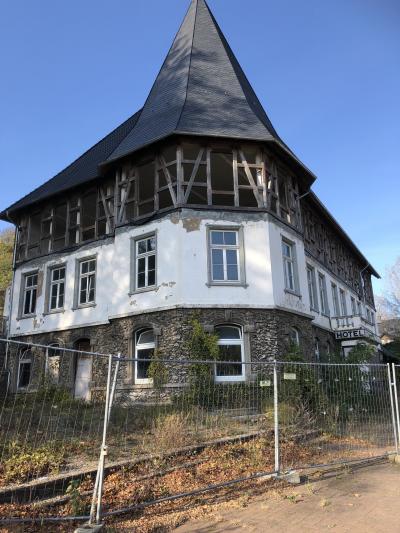

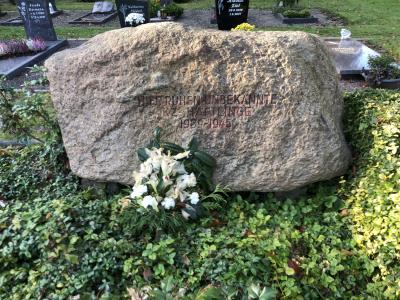

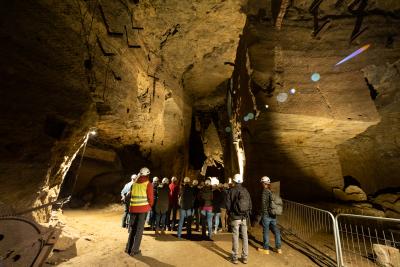

Strategic aerial warfare, the founding of the “Jägerstab” programme, and the transfer of factories underground: historical background
From 20 to 25 February 1944, in what was known as the “Big Week”, the Allies conducted a series of air strikes on sites used to produce armaments by the National Socialists. The focus of the bombing raids was the destruction of German aircraft production sites, with the overriding goal of dealing a decisive blow to the Luftwaffe.[3]
The targeted air strikes did indeed have a major impact. Production of the fighter planes in particular, which were essential for the defence of the German Reich, was severely hampered. The response of the NS regime was swift: as early as 1 March 1944, on the initiative of the Reich Air Ministry (Reichsluftfahrtministerium) and the Reich Ministry for Armament and War Production (Reichsministerium für Rüstung und Kriegsproduktion), the “Jägerstab” aircraft production committee was founded.[4] This group was tasked with taking measures to guarantee the protection and uninterrupted production of the aviation and air force industry:
“To secure the Jägerpogramm [fighter aircraft programme], the ‘Jägerstab’ will be created with immediate effect by the Reichsminister für Rüstung und Kriegsproduktion [Reich Minister for Armament and War Production], for the duration of 6 months. Its objective is to repair damaged factories [of the aviation and air force industry; author’s note], or to implement their relocation, without bureaucratic impediments and by issuing direct orders. This measure – in particular insofar as it pertains to construction work – takes priority over all other measures that have been regarded as being of particular importance in recent times. (...) The Jägerstab shall build satellite locations for the production sites in question.”[5]
The wording of the order regarding the establishment of the Jägerstab reflects the acute urgency felt by the National Socialists when it came to taking protective measures for the war industry at this point in time. The members of the committee immediately decided to relocate the aviation and air force production sites to rural regions which would be less affected by Allied bombing raids. If possible, the sites were even to be moved underground. This Herculean task demanded a huge labour force which could not be provided by German citizens alone. It was already becoming necessary to replace those Germans working in different areas of industry who had been called up to fight or who had been killed at the front, with the result that the number of German workers available continued to decline. At the same time, however, after the turning point in the war in the winter of 1941/42, the need for armament equipment increased, and the relocation of industrial sites that were important for the war effort in the spring of 1944 made it all the more urgent to find more workers. To compensate for the dwindling labour force, the National Socialist regime systematically made use of prisoners of war, concentration camp inmates and civilians from abroad, who were employed as forced labourers, including for the underground relocation:
“(...) Insofar as the measures pertain to the acquisition of bomb-proof production facilities in larger caves or new mine tunnels, the Reich Minister for Armament and War Production [Reichsminister für Rüstung und Kriegsproduktion] shall involve the Reichsführer SS in the implementation of the required construction measures. (...) The Reichsführer SS shall provide protective custody prisoners in sufficient numbers to assist in the construction and production”.[6]
Heinrich Himmler, the Reichsführer SS, was therefore personally responsible for providing labourers for the relocations. Hans Kammler, SS-Gruppenführer and engineer, who at that time was head of Department (Amtsgruppe) C (construction) in the SS Main Economic Policy Office (SS-Wirtschaftsverwaltungshauptamt), had already worked on other relocations, where he was noted for his complete disregard for the lives of the forced labourers. Kammler was ordered by the Armament Minister (Rüstungsminister) Albert Speer to lead the construction of the new underground sites.[7] To implement this special construction order, Kammler established his own construction organisation under his name, and ordered that the regional relocation projects, including the one at Porta, be subject to individual special inspections by the SS.[8] SS Special Inspection (Sonderinspektion) I, headed by the engineer Bernhard von Glisczynski, was responsible for the relocation work at the Porta.[9] The power of the Jägerstab to issue direct orders and the involvement of important representatives from the armament industry, the war ministry and the SS meant that work could start quickly on relocating the sites. This had immediate consequences for the “Gate of Westphalia”: it was decided just three days after the Jägerstab was founded that production sites should be relocated to the hills surrounding the Weser river. As a result, during the final two years of the war, several thousand labourers were put to work in the NS armament production sites at Porta Westfalica.[10]
[3] See Schulte, Jan Erik: Untertage- und Rüstungsverlagerungen: Die Neuengamme-Außenlager in Lengerich und an der Porta Westfalica, p. 131
[4] See Fröbe, Rainer: „Vernichtung durch Arbeit?“ KZ-Häftlinge in Rüstungsbetrieben an der Porta Westfalica in den letzten Monaten des Zweiten Weltkriegs, p. 224 f.
[5] Speer, Albert: From Albert Speer’s orders from 1 March 1944 concerning the creation of the Jägerstab, p. 443 ff.
[6] Göring, Hermann: Secret orders regarding the Jägerstab, 4 March 1944, p. 445.
[7] See Schulte, Jan Erik, p. 132 f.
[8] See ibid.
[9] See ibid., p. 133.
[10] See Fröbe, Rainer, p. 228.





















































































